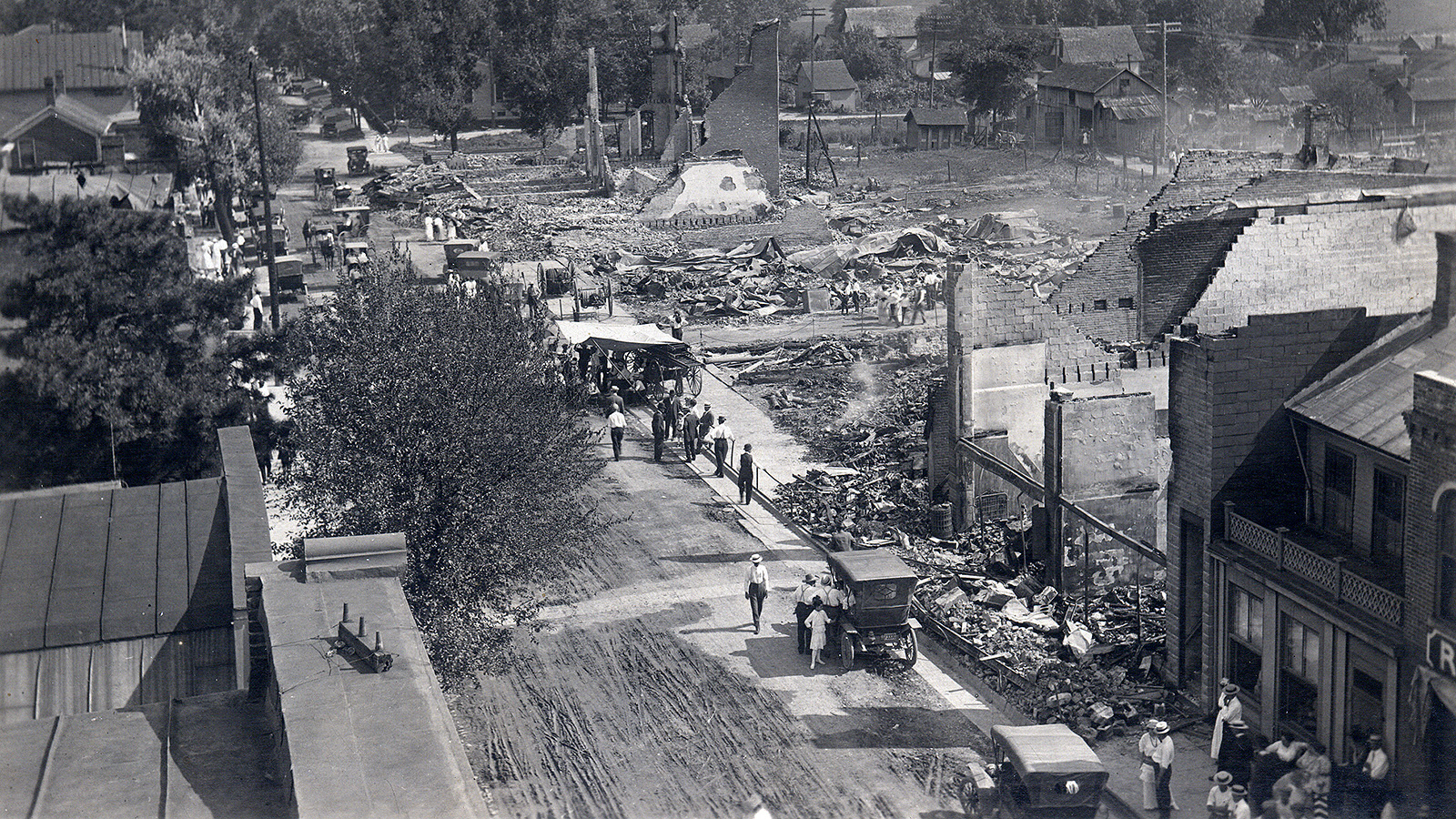
By Lisa M. Sudlow
“Our neighboring village of DeGraff suffered a terrible loss from fire which destroyed about half of the business section of the town, early last Friday morning.”(1) With those words the West Liberty Banner informed its readers that the village of DeGraff had once again fallen victim to a destructive fire. The fire of 1914 was the sixth major fire in twenty-eight years to strike DeGraff and remains the largest and most destructive fire in DeGraff’s history.

At 2:00 am on the morning of July 24, 1914 the sleeping inhabitants of DeGraff were awakened by the “clanging of the [fire] bell and the shrieking of the whistle” warning them of the fire.(2) Nightwatchman James Taylor discovered the fire, which began in Carpenter’s Livery Barn, while on his nightly rounds. The townspeople immediately rushed to the livery to try and contain the blaze but when they chopped their way into the barn flames leaped out and it was impossible to rescue the five horses stabled inside. Realizing that they were unable to put out the fire without assistance Fire Chief S.P. Pond requested aid from the Bellefontaine, Quincy, and Sidney fire departments. The Quincy Fire Department arrived forty-one minutes after they received the call and worked to help put out the blaze, which was rapidly spreading northward. The Sidney fire engine and the Bellefontaine hose reel were sent on the Big Four Railway by special engines and arrived shortly thereafter.
The fire raged for four hours before the combined efforts of the DeGraff, Quincy, Sidney, and Bellefontaine fire departments were able to extinguish it. Within those four hours nearly half of DeGraff’s business district was destroyed including twenty-one business rooms and several other buildings, including one private residence. Damage, in terms of buildings and merchandise destroyed, was estimated at $100,000 with about 40% being covered by insurance. However, there were no deaths and only one reported injury as a result of the fire.
Within a week of the fire, DeGraff had already taken steps to rebuild. The ruins of burnt out buildings were torn down and Main Street was once again open to traffic. The Electric Plant, which was originally thought to be a complete loss, had restored power to a portion of the town and several businesses that had not been completely destroyed had made repairs and were open for business again. Many other businesses had begun the process of rebuilding and it was predicted that within “a year or two” DeGraff would “be a better town than ever” and that a “new DeGraff” would “arise from the ashes of the old.”(3)
Sources:
(1) The West Liberty Banner. Thursday, July 30, 1914
(2) Daniel E. Strayer. History of DeGraff, 1950.
(3) West Liberty Banner, Thursday, July 30, 1914. The Bellefontaine Weekly Examiner. Friday, July 31, 1914.

